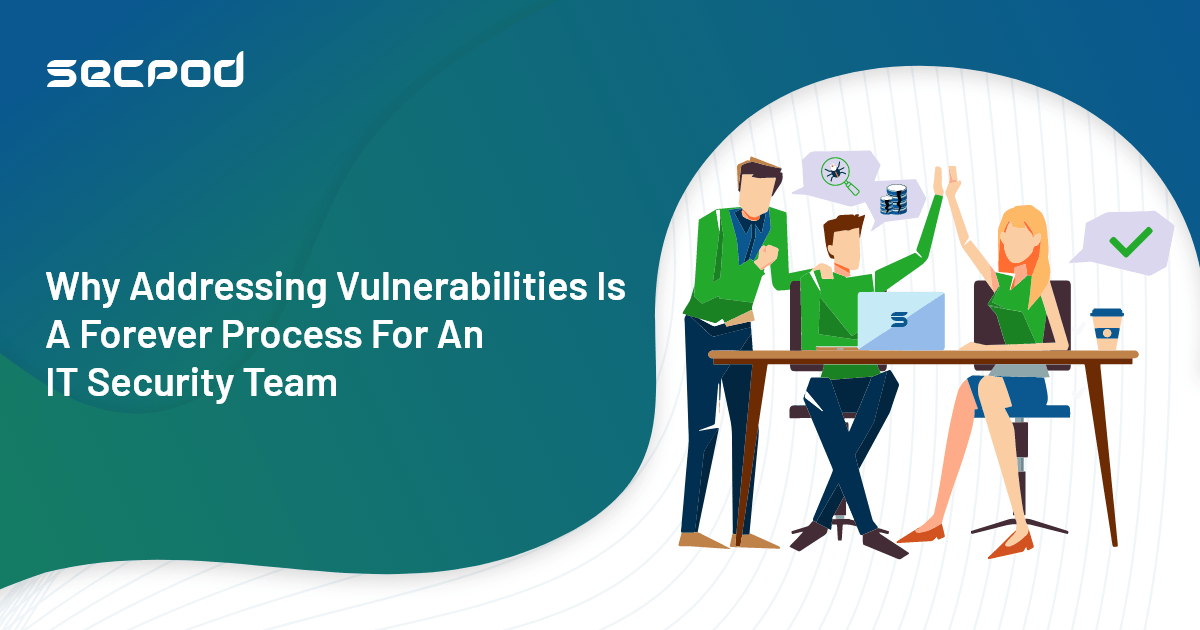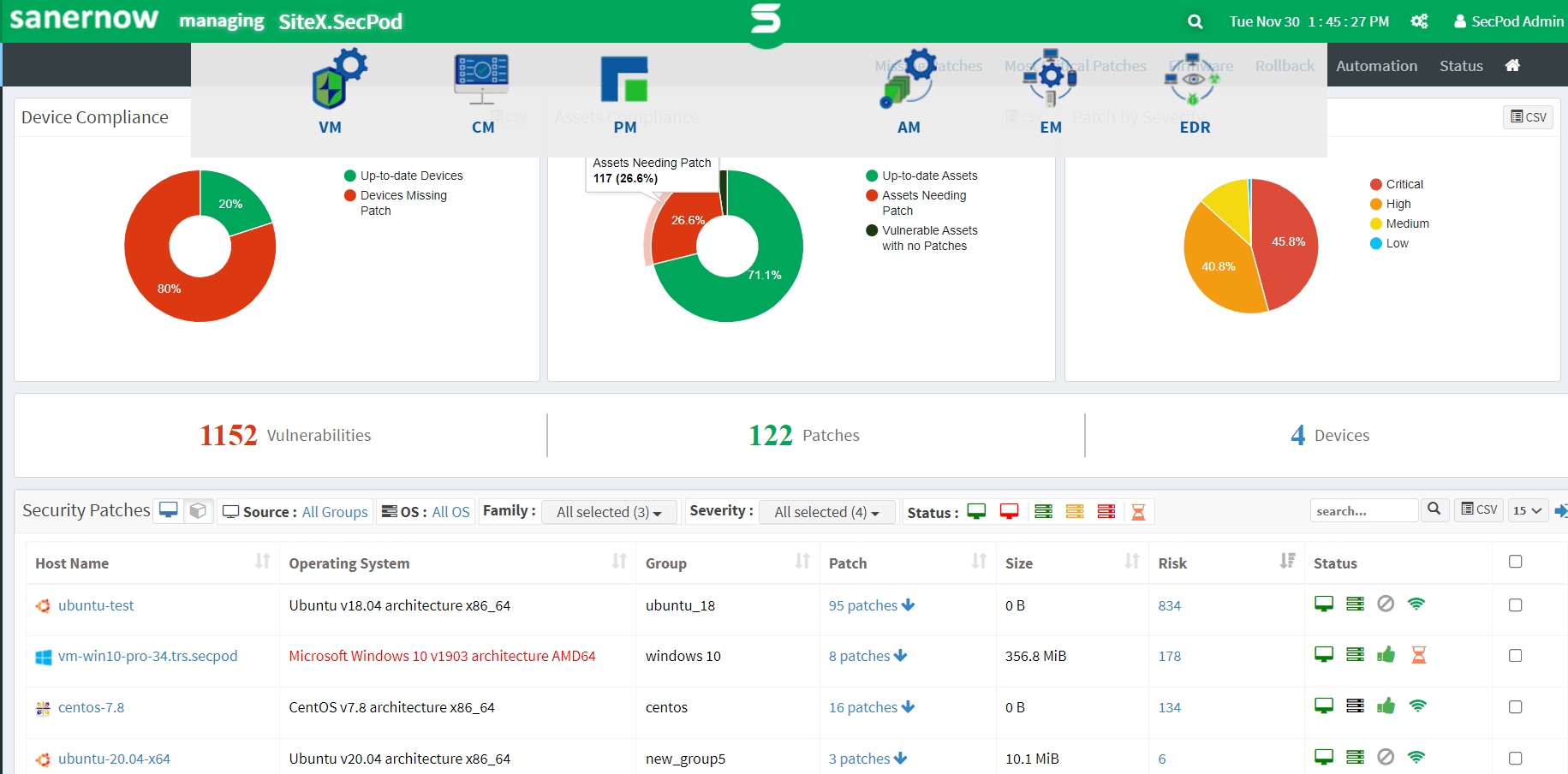As the IT infrastructure and the business data becomes more complex, security concerns in businesses increase drastically. According to the National Vulnerabilities Database, the number of Common Vulnerabilities and Exploit in a network has tripled since 2016. As a result, cybercriminals are taking advantage of the increasing number of vulnerable assets. Security teams are constantly looking for the right solutions to manage vulnerabilities. However, vulnerability remediation is still a massive challenge for them. A Vulnerability Management Software can streamline this process.
A decade ago, the vulnerability mitigation process was entirely manual. It used to consume several days to identify the possibility of security threats in a network. Today, the arrival of cyber threat intelligence, cloud technologies, and predictive algorithms has transformed how we resolve security issues. Thus, a well-defined strategy is what security teams need today to combat vulnerability remediation challenges successfully. Applying patches regularly with a patch management tool can also help with maintaining a secure IT posture.
The Significance of the Vulnerability Remediation Process
Vulnerabilities in a network will generally result in the loss of sensitive business data or denial of services. Attackers also steal business data using the security gaps associated with any software assets. The new vulnerabilities and unpatched applications are the doorways for attackers to exploit software assets. According to a survey, “almost 60% of the security breach in an organization were due to an unpatched vulnerability”.
Unpatched vulnerabilities are the primary cause of security breaches. In the past, there are several instances of many attacks that occurred due to unpatched applications in an enterprise network. The infamous WannaCry attack was due to a patch that was available three months before the attack date.
In most organizations, security teams actively identify vulnerabilities but do not show an active interest in the remediation process. Delay in resolving any security gaps will open the door for attackers to invade the network. Therefore, security teams must understand that vulnerability management does not stop with just the identification process; remediation should always be the final and mandatory step. And only a robust remediation process can only protect businesses and avoid future attacks.
Vulnerability Remediation Challenges
When we closely dive in and analyze the delay in vulnerability remediation, we can clearly understand some critical vulnerability remediation challenges on the security team’s plate. Some of them are:
Manual process:
Managing vulnerable assets under a manual process is time-consuming, isolated, and requires face-to-face interactions among security teams. It leads to substantial security gaps, complex processes, and avoids real-time responses to threats. Here are a few general steps involved during the manual process of remediation:
- A vulnerability is identified
- Vendor releases the patch/solutions
- Security engineer reviews the patches/solutions that need implementation
- The fix is tested, approved and released into production
Determining the right tools:
Vulnerability management is not a one-step process. It involves various stages, and some organizations still rely on open-source vulnerability scanners and use multiple tools to execute the process. This causes chaos in handling different interfaces and delays the whole process. On the other hand, an enterprise should analyze various IT security data points such as the cost of a data breach, regulatory compliance, possible attacks and many more to make better-informed decisions in choosing the right tools for managing security gaps.
Lack of Insight on what to remediate first:
There is no way an IT team can address all the vulnerabilities involved during the remediation process. It is necessary to have prioritization policies in place and evaluate the risks. Lack of such policies that define the criticalness of the issues will always lead to disorientation of the risks. Most importantly, the risk assessment is the primary source for an effective remediation process.
In addition, the traditional process of mitigating the vulnerabilities does not have a clear understanding of the vulnerability that needs to be addressed first. If companies lack tools that can prioritize risks, the possibility of focusing the efforts on less critical risks is more. Thus, risk-based vulnerability management is necessary today to effectively handle critical risks rapidly.
The above vulnerability remediation challenges will lead to a delay in the implementation of the remediation process.
How to Set Practical Timeframes to Remediate Vulnerabilities
Companies need to consider a fact-based approach to resolve security vulnerabilities. And an industry-standard timeframe with solid policies and compliances is necessary. Here are a few practical remediation timeframes while dealing with security concerns. It benefits the process of resolving cyber security issues at various levels.
Incorporate effective vulnerability management to the organization’s goal:
Instead of taking vulnerability remediation as an ad-hoc method, security teams should bring in a practical framework to manage security gaps.
An organization should consider the remediation process as one of its prime objectives. This generally requires risk assessment, real-time use cases, operational abilities, and limitations. At times, it is necessary to absorb the disruption in the operation while addressing vulnerable devices or software. Therefore, it is vital to bind vulnerability management practices to the company’s goal to handle security easily.
Prioritize vulnerabilities:
IT admins should consider prioritizing vulnerable assets as a fundamental goal of a remediating process. It helps them use limited resources on the most critical issues. Not every threat poses the same level of risks. Additionally, prioritization will give clear insights into the vulnerabilities that pose high risks. This will help security teams remediate the severe vulnerabilities first, combating the chances of high-risk exploits.
Technology to remediate vulnerable assets:
Remediation solutions involve the use of various patch management tools to avoid cyber-attacks more effectively. It results in less operational impact as they are built on the cloud platform. Furthermore, adopting a patch management program lets an organization project as a more challenging target for attackers. As a result, it prevents security attacks and helps to increase the performance of IT assets.
Integrated patch management solutions along with vulnerability management will help to resolve the vulnerabilities at a faster rate.
Automate vulnerability management process:
The automation process should ensure that the system can deliver necessary data without requiring users to log in. Several cloud-based vulnerability management tools can automate all the steps from periodic scanning, risk assessment, prioritization, remediation, and reporting. It enhances the performance of remediation solutions with limited resources.
Most importantly, assets like cloud consoles, multi-functional agents, and cyber-physical systems in an enterprise will make the vulnerability management process more effective.
The SanerNow integrated Vulnerability and Patch Management Solution for Timely Remediation:
SecPod SanerNow offers a fully integrated vulnerability and patch management solution to manage vulnerabilities. SanerNow’s Vulnerability management software is built for the modern enterprise to Detect, Assess, Prioritize and Remediate vulnerabilities on devices from a centralized cloud console.
The key features of the software include:
- The fastest automated scans in less than 5 minutes
- The world’s largest built-in database with 160,000+ software vulnerability checks
- An integrated patch management solution to remediate vulnerabilities instantly.
- Cloud-based solutions to manage the hybrid remote workforces
- A lightweight multi-functional agent to execute all tasks
Experience the fastest and simplest vulnerability remediation process with SanerNow. Schedule a demo now!


